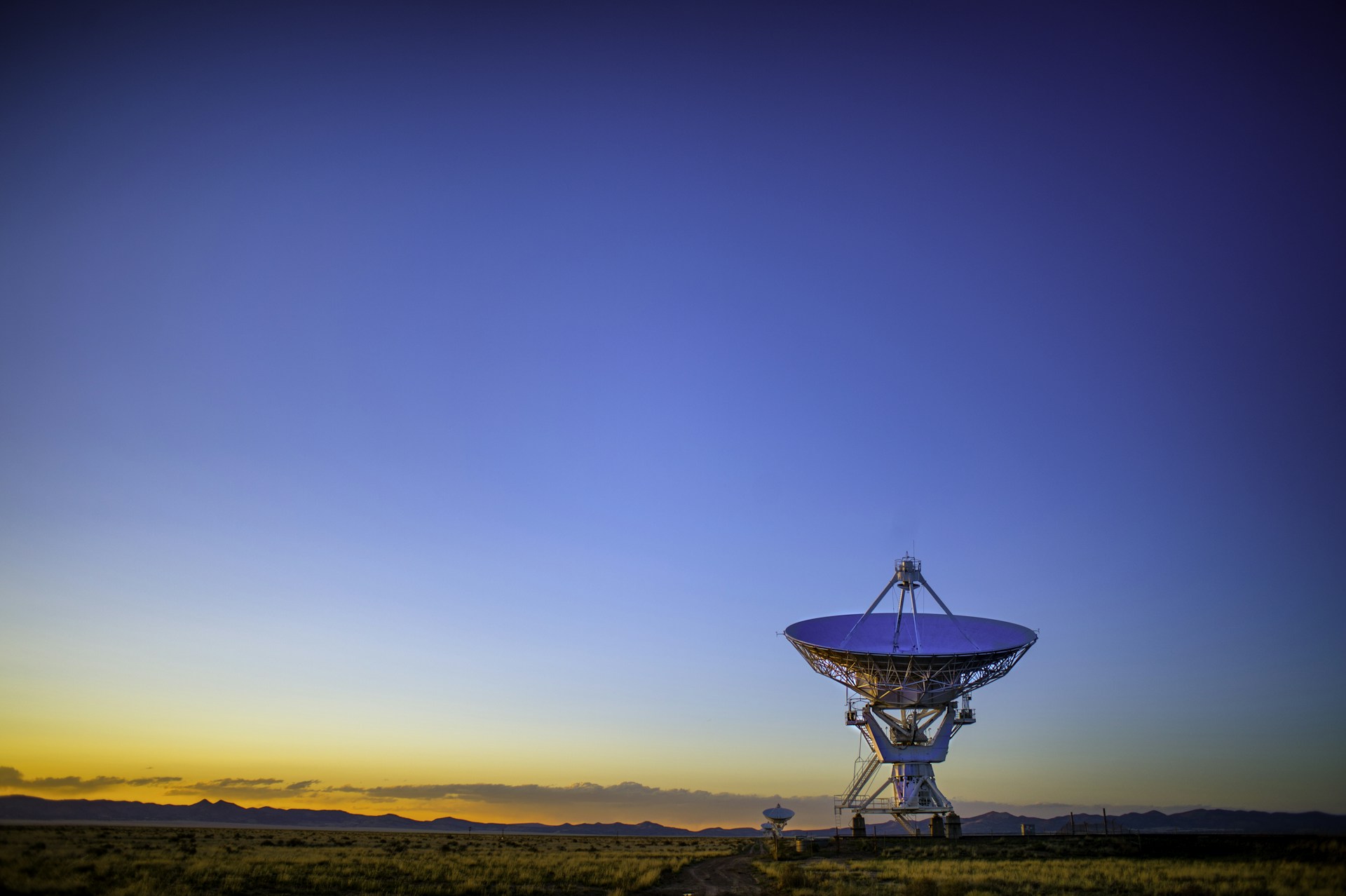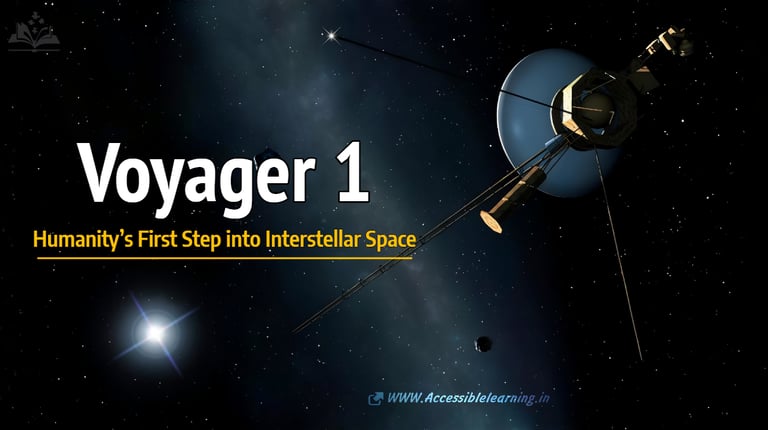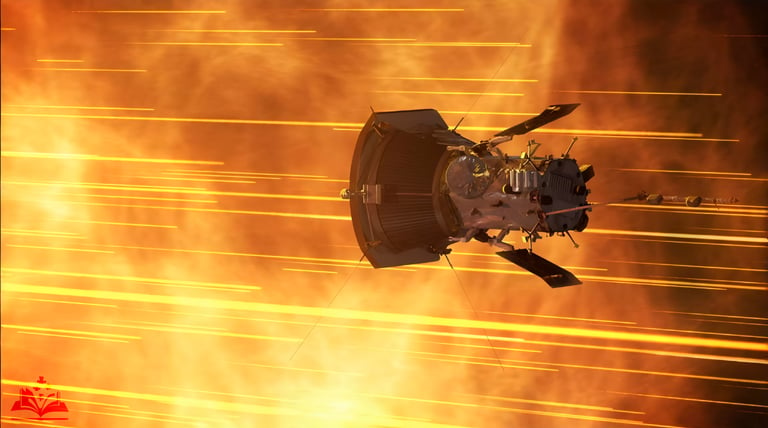
Crazy Space Missions: Humanity's Most Extraordinary Ventures Beyond Earth
Discover humanity's most extraordinary space missions, from Tesla cars in orbit to Mars helicopters. Explore incredible facts about these groundbreaking ventures beyond Earth.
SPACE/TECHEDUCATION/KNOWLEDGESPACE MISSION
Sachin K Chaurasiya / Kim Shin
7/18/202510 min read


Space exploration has always pushed the boundaries of human imagination and engineering capability. From launching cars into space to landing on comets hurtling through the cosmos, some space missions have captured global attention not just for their scientific value but for their sheer audacity and seemingly impossible nature. This comprehensive examination explores the most remarkable space missions that have redefined our understanding of what's possible in the vast expanse of space.
The Tesla Roadster Journey: When Elon Musk Launched a Car into Space
In February 2018, SpaceX achieved something that sounded like science fiction: launching a cherry-red Tesla Roadster into space aboard the Falcon Heavy rocket. This unconventional payload choice demonstrated the rocket's capability while creating one of the most memorable moments in space exploration history.
The Tesla Roadster, complete with a spacesuit-clad mannequin named "Starman" in the driver's seat, was sent on a trajectory toward Mars orbit. The mission served multiple purposes beyond mere spectacle. It provided SpaceX with a practical test payload for the Falcon Heavy's inaugural flight while generating unprecedented media coverage and public interest in space exploration.
The vehicle continues its journey through space, equipped with cameras that captured stunning footage of Earth receding in the distance. Current tracking data suggests the Roadster will orbit the Sun for millions of years, occasionally crossing paths with Earth and Mars in its elliptical trajectory.
Fascinating Facts About the Tesla in Space
The Tesla Roadster contains several remarkable details that enhance its legendary status. The car's audio system was programmed to play David Bowie's "Space Oddity" on repeat, though the vacuum of space prevents any actual sound transmission. The vehicle carries a plaque inscribed with the names of SpaceX employees and contains a copy of Douglas Adams' "The Hitchhiker's Guide to the Galaxy" in the glove compartment, along with a towel and a sign reading "Don't Panic."
The Roadster's battery died within 12 hours of launch, and the car is gradually being stripped of its paint and materials by cosmic radiation. Scientists calculate that the vehicle has a six percent chance of colliding with Earth within the next million years, though it will likely be reduced to space debris long before such an encounter occurs.
Rosetta and Philae: The Comet Landing Mission
The European Space Agency's Rosetta mission represents one of the most technically challenging achievements in space exploration. Launched in 2004, Rosetta spent ten years traveling through space to rendezvous with Comet 67P/Churyumov-Gerasimenko, a mission that required unprecedented precision in trajectory calculations and orbital mechanics.
The mission's most extraordinary moment came in November 2014 when the Philae lander detached from the Rosetta orbiter and attempted to land on the comet's surface. This marked the first time humanity had successfully landed a spacecraft on a comet, despite the numerous technical challenges involved.
The comet's extremely low gravity and irregular surface presented unique obstacles. Philae's landing did not go as planned, with the lander bouncing several times before settling in a shadowed location that limited its solar power generation. Nevertheless, the mission provided invaluable data about comet composition, structure, and the early solar system's formation.
Remarkable Comet Mission Facts
The Rosetta mission revealed extraordinary characteristics of comet 67P that defied expectations. The comet measures approximately 4 kilometers long and has a distinctive rubber duck shape, with two lobes connected by a narrow neck. The comet's surface temperature ranges from minus 180 degrees Celsius in shadowed areas to minus 40 degrees Celsius in sunlight, creating extreme thermal variations across its surface.
Perhaps most surprising was the discovery that water on comet 67P has a different isotopic composition than Earth's water, challenging theories about comets being the primary source of our planet's water. The comet also produces approximately 300 milliliters of water vapor per second at its closest approach to the Sun, enough to fill a small bottle every second. Scientists determined that the comet's interior contains organic compounds older than the solar system itself, providing direct evidence of interstellar material incorporated into solar system formation.


Voyager Program: The Interstellar Messengers
Launched in 1977, the twin Voyager spacecraft have achieved something that seemed impossible at the time: leaving the solar system entirely. These missions were initially designed to explore the outer planets during a rare planetary alignment that occurs once every 175 years.
Voyager 1 and Voyager 2 completed their primary mission objectives by conducting flybys of Jupiter, Saturn, Uranus, and Neptune, transmitting unprecedented images and data back to Earth. The missions revealed active volcanism on Jupiter's moon Io, complex ring systems around the gas giants, and detailed atmospheric compositions of the outer planets.
The truly extraordinary aspect of the Voyager program lies in its ongoing interstellar mission. Voyager 1 crossed into interstellar space in 2012, followed by Voyager 2 in 2018. Both spacecraft continue transmitting data about the cosmic environment beyond our solar system, providing humanity's first direct measurements of interstellar space.
Each Voyager carries a Golden Record containing sounds, images, and messages from Earth, intended as a message to any extraterrestrial intelligence that might encounter the spacecraft in the distant future.
Extraordinary Voyager Mission Facts
The longevity of the Voyager missions continues to astound scientists and engineers. Both spacecraft were designed for four-year missions but have operated for over 46 years, making them among the longest-running space missions in history. Voyager 1 currently travels at approximately 38,000 miles per hour and is now more than 14 billion miles from Earth, making it the most distant human-made object in space.
The Golden Records aboard each spacecraft contain 115 images, natural sounds including thunder, wind, and animal calls, musical selections from various cultures, and spoken greetings in 55 languages. The records are made of gold-plated copper and include instructions for playback, along with a diagram showing Earth's location relative to 14 pulsars. The records are expected to remain playable for over one billion years, long after Earth's continents have shifted dramatically due to plate tectonics.
Communication with the Voyager spacecraft presents unique challenges, as signals take over 22 hours to travel from Earth to Voyager 1. The spacecraft's transmitters produce only 20 watts of power, equivalent to a refrigerator light bulb, yet NASA can still receive their signals using massive radio dishes. Scientists estimate that the spacecraft will continue transmitting data until approximately 2025, when their radioisotope thermoelectric generators will no longer provide sufficient power for their instruments.
New Horizons: The Pluto Flyby Mission
The New Horizons mission exemplifies humanity's determination to explore the most distant reaches of our solar system. Launched in 2006, this spacecraft embarked on a nine-year journey to Pluto, covering approximately 3 billion miles through space.
The mission's complexity extended beyond the vast distance involved. Pluto's small size and distant location required extraordinary precision in navigation and timing. The spacecraft had only one opportunity to conduct its flyby, with no possibility of course correction once it reached the dwarf planet.
In July 2015, New Horizons successfully flew past Pluto, providing humanity's first close-up images of the distant world. The mission revealed Pluto to be far more geologically active and diverse than previously imagined, with evidence of flowing nitrogen glaciers, complex surface features, and a dynamic atmosphere.
Following the Pluto encounter, New Horizons continued deeper into the Kuiper Belt, conducting a flyby of the asteroid Arrokoth in 2019, providing insights into the formation of the early solar system.
Remarkable New Horizons Mission Facts
The New Horizons mission achieved several engineering marvels that demonstrate the precision required for deep space exploration. The spacecraft traveled at speeds reaching 36,000 miles per hour, making it one of the fastest human-made objects ever launched. During its Pluto flyby, New Horizons passed within 7,800 miles of the dwarf planet's surface at a relative speed of 30,800 miles per hour, capturing detailed images and data during a brief nine-day encounter window.
The mission revealed that Pluto possesses a remarkably complex geology, including plains of nitrogen ice, methane sand dunes, and possible cryovolcanoes. The dwarf planet's largest moon, Charon, showed evidence of ancient tectonic activity with massive canyons stretching across its surface. Perhaps most intriguingly, New Horizons detected a possible subsurface ocean on Pluto, maintained by radioactive decay in the planet's core and tidal heating from Charon.
The spacecraft's communication with Earth during the Pluto encounter required extraordinary patience, as radio signals took four and a half hours to travel between New Horizons and Earth. The complete data transmission from the flyby took 15 months to complete, with the spacecraft methodically sending back terabytes of scientific information at a rate of approximately 1,000 bits per second.
Parker Solar Probe: Touching the Sun
NASA's Parker Solar Probe represents perhaps the most extreme space mission ever attempted. Launched in 2018, this spacecraft is designed to fly closer to the Sun than any previous mission, approaching within 4 million miles of the solar surface.
The mission's technical challenges are extraordinary. The spacecraft must withstand temperatures exceeding 2,500 degrees Fahrenheit while maintaining sensitive scientific instruments at room temperature. This requires an innovative heat shield made of carbon composite materials, along with sophisticated thermal management systems.
The Parker Solar Probe's elliptical orbit takes it closer to the Sun with each pass, using Venus's gravity assists to gradually reduce its distance from our star. The mission aims to solve fundamental questions about solar physics, including the mechanisms behind solar wind acceleration and the heating of the solar corona.
Extraordinary Parker Solar Probe Facts
The Parker Solar Probe represents the fastest human-made object ever created, reaching speeds of 430,000 miles per hour during its closest solar approaches. At this velocity, the spacecraft could travel from Philadelphia to Washington, D.C., in one second. The probe's heat shield, measuring eight feet in diameter, maintains the spacecraft's instruments at room temperature while the shield itself experiences temperatures hot enough to melt copper.
The spacecraft's trajectory requires exceptional precision, as it must navigate the sun's intense gravitational field while avoiding solar material that could damage its instruments. During its closest approaches, the probe experiences gravitational forces 584 times stronger than Earth's gravity. The mission timeline spans seven years, with the spacecraft making 24 close approaches to the Sun, each bringing it approximately 400,000 miles closer to the solar surface.
The probe's instruments must operate in an environment where the Sun appears 23 times brighter than it does from Earth. The spacecraft's innovative design includes a special cooling system that circulates water through the instrument compartment, along with fault-protection systems that automatically orient the heat shield toward the Sun if communication is lost with Earth.


Cassini-Huygens: The Saturn System Explorer
The Cassini-Huygens mission combined ambition with longevity, spending 13 years exploring the Saturn system from 2004 to 2017. This joint NASA-ESA mission consisted of the Cassini orbiter and the Huygens probe, which landed on Saturn's moon Titan.
The mission's scope was unprecedented, conducting detailed studies of Saturn's rings, atmosphere, and numerous moons. Cassini discovered geysers of water vapor erupting from Enceladus, suggesting the presence of a subsurface ocean that could potentially harbor life.
The Huygens probe's landing on Titan marked the first successful landing in the outer solar system. The probe transmitted data and images from Titan's surface, revealing a world with lakes and rivers of liquid methane and ethane, along with complex organic chemistry.
Cassini's mission concluded with a dramatic Grand Finale, during which the spacecraft made 22 orbits between Saturn and its rings before plunging into the planet's atmosphere, ensuring no contamination of potentially habitable moons.
Remarkable Cassini-Huygens Facts
The Cassini-Huygens mission achieved numerous groundbreaking discoveries that revolutionized our understanding of the Saturn system. The spacecraft traveled 4.9 billion miles over its 20-year journey, including seven years of transit to Saturn. Cassini carried 12 scientific instruments and captured more than 453,000 images during its mission, including the famous "Day the Earth Smiled" photograph showing Earth as a pale blue dot through Saturn's rings.
The mission discovered that Saturn's moon Enceladus harbors a global subsurface ocean beneath its icy crust, with geysers erupting from its south pole at speeds reaching 800 miles per hour. These geysers contain water vapor, organic compounds, and silicate particles, suggesting conditions that could potentially support life. The Huygens probe's descent through Titan's atmosphere revealed methane rain, hydrocarbon lakes, and surface temperatures of minus 290 degrees Fahrenheit.
Cassini's observations revealed that Saturn's rings are far more dynamic than previously understood, with structures called "spokes" appearing and disappearing due to electromagnetic forces. The spacecraft also discovered that Saturn's moon Iapetus has a distinctive two-tone coloration, with one hemisphere significantly darker than the other, caused by thermal processes and dust accumulation from other moons in the Saturn system.
InSight: Listening to Mars' Heartbeat
NASA's InSight mission took a unique approach to Mars exploration by focusing on the planet's interior rather than its surface features. Launched in 2018, InSight deployed a seismometer directly on the Martian surface to detect "marsquakes" and study the planet's internal structure.
The mission's most challenging aspect involved deploying a heat probe designed to burrow 16 feet into the Martian surface. This "mole" encountered unexpected soil properties that prevented it from reaching its intended depth, highlighting the unpredictable nature of space exploration.
Despite these challenges, InSight successfully detected hundreds of marsquakes, providing unprecedented insights into Mars' internal structure and geological activity. The mission revealed that Mars remains seismically active, with ongoing geological processes shaping the planet's interior.
Perseverance & Ingenuity: The Mars Helicopter Achievement
The Mars 2020 mission brought together two remarkable achievements: the Perseverance rover and the Ingenuity helicopter. While Perseverance represents the most advanced Mars rover ever built, Ingenuity achieved something truly extraordinary by becoming the first aircraft to fly on another planet.
Ingenuity's flights on Mars required overcoming significant technical challenges. The Martian atmosphere is extremely thin, with air density less than one percent of Earth's atmosphere. The helicopter's design required ultra-lightweight construction, specialized rotor blades, and autonomous flight control systems.
The successful flights of Ingenuity have opened new possibilities for planetary exploration, demonstrating that aerial vehicles can operate effectively on other worlds. The helicopter has continued operating well beyond its planned mission duration, serving as a scout for Perseverance and proving the viability of aerial exploration on Mars.

The Future of Extraordinary Space Missions
Current and planned missions continue pushing the boundaries of space exploration. The James Webb Space Telescope has begun revealing the universe's earliest galaxies, while the Artemis program aims to return humans to the Moon. Future missions propose even more ambitious goals, including sample return missions from Mars, exploration of Jupiter's moon Europa, and potential human missions to Mars.
The extraordinary nature of these missions lies not just in their technical achievements but in their ability to inspire human imagination and expand our understanding of our place in the universe. Each mission represents humanity's collective desire to explore, understand, and reach beyond the confines of our home planet.
The space missions explored in this examination demonstrate humanity's remarkable capacity for innovation, perseverance, and vision. From launching cars into space to landing on comets and flying helicopters on Mars, these missions have consistently exceeded expectations and redefined what's possible in space exploration.
These extraordinary ventures serve multiple purposes beyond their scientific objectives. They inspire new generations of scientists and engineers, drive technological innovation with applications beyond space exploration, and unite humanity in shared wonder at the cosmos. As we continue to push the boundaries of space exploration, these missions remind us that the most seemingly impossible ideas can become reality through human ingenuity and determination.
The legacy of these crazy space missions extends far beyond their immediate scientific contributions. They represent humanity's greatest adventure, our collective journey to understand the universe and our place within it. As we look toward future missions that promise even greater challenges and discoveries, we can draw inspiration from these extraordinary achievements that have already expanded the boundaries of human knowledge and capability.
Subscribe To Our Newsletter
All © Copyright reserved by Accessible-Learning Hub
| Terms & Conditions
Knowledge is power. Learn with Us. 📚


